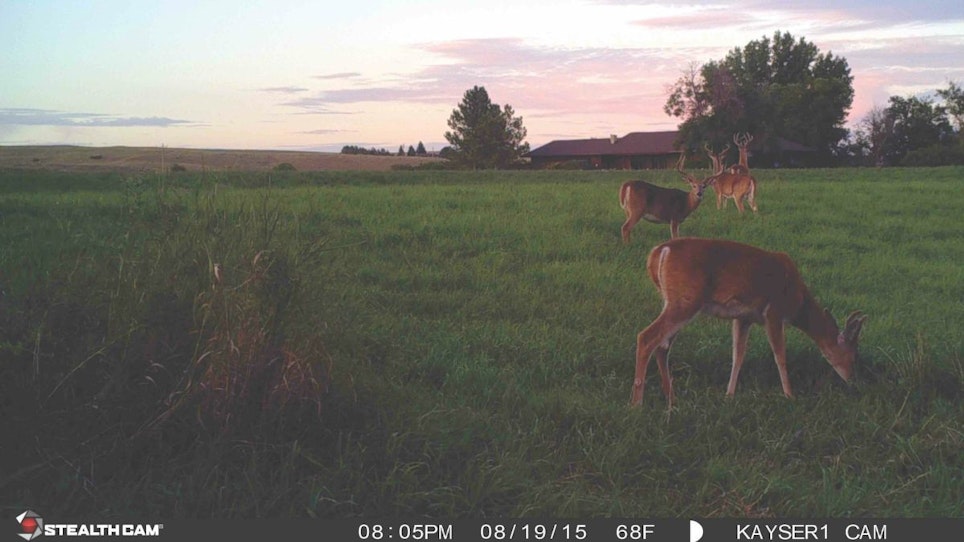Trail camera surveillance through the summer months gives you the jumpstart to uncover a fall contender, while unraveling the mysteries of the whitetail world. You won’t be able to issue a whitetail buck a speeding ticket, but you could micro manage a hunting plan to issue it a free trip to the taxidermist.
Putting together a fall game plan requires you to monitor more than just one location though. Take some time this summer between barbecues and ball games to establish surveillance on some of the most frequently visited locales in the biosphere whitetails call home.
Texas native Blake Richards has been hunting whitetails for 37 years with Texas as his starting point. Today, he cannot get enough of those big Midwestern whitetails; Kansas is his mainstay destination, alongside trips to Nebraska and Oklahoma. With hunting plans spread out over several states, Richards understands the importance of trail camera images to be ready when fall arrives
“Trail cameras, like the wireless options of today with live coverage, can accurately help you pinpoint whitetail activity throughout the year with summer scouting highly important in your overall ambush plan,” said Richards.
At times cameras can almost provide too much information, Richards says. Even with the overload, summer surveillance on food plots is a great starting point for future success.
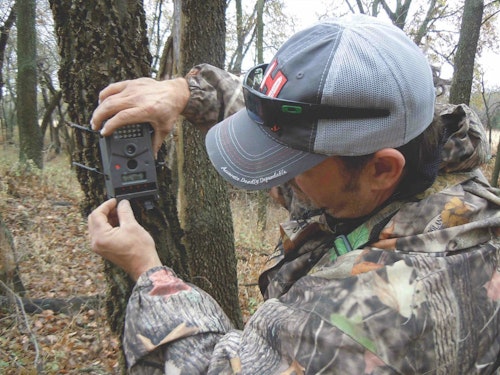
Reservation Please
The power of food is immense. It’s the central activity to most family gatherings and brings enormous groups of people together morning, noon and night. It has a similar effect on whitetails, making it a no brainer for a top location to stage one or more trail cameras for your surveillance mission. Your region likely has a popular crop to attract whitetails during the summer months. For Richards, the attraction is alfalfa.
“Alfalfa is 100 percent the best at attracting summer whitetails, and it’s where I can expect to get the most images during summer,” Richards said. “Clover is decent, but alfalfa holds them more and it is so high in protein it’s great for antler growth. The fact it lasts longer than other crops and benefits their health makes it a winning combination.”
For Richards, the art of planning, planting and maintaining food plots is akin to being a traffic director. His crops tell whitetails where to go.
“Whether it’s alfalfa or some other food plot planting, you’ll soon see heavy trails coming in and out of those crops,” he said. “Edges are ideal for camera placements, but I’m trying to uncover where bucks are coming from and going to so I like to monitor trail entrance points. That also gives you a starting point for later on when you want to backtrack and follow them into the maze for even more trail camera locations.”
Montana outfitters Rich Schneider and his partner Rick Wilund, operate J and J Guide Service. Their business focuses on big game with bow and firearm, plus unprecedented waterfowl hunting. Schneider started his whitetail hunting in central Wisconsin with a recurve bow. Since then, he’s hunted whitetails for nearly 50 years including stops in many popular whitetail destinations such as Idaho, Manitoba and Ontario. Today the arid vastness of eastern Montana is where he outfits and he sates his whitetail appetite by helping clients fulfill their hunting dreams.
“Montana’s abundance of expansive agricultural fields can make it difficult to pinpoint summer whitetails,” said Schneider. “You can locate trails and funnels coming into the large fields for camera placement, but there’s an even better option. Montana’s hot and dry summers give me a better chance of getting images of a good buck with a focus on water.”
Shaken, Not Stirred
A cool tall drink sounds refreshing on a humid summer evening. Deer are likely thinking the same as they emerge from a day of bedding cover typified by all-day insect hassles. Keep that in mind as Schneider’s Montana experience suggests. Water can a play a decisive role in grabbing the attention of a thirsty buck for a few quick snaps.
Deer require water daily and will gulp anywhere from two to four quarts during the day. That increases during the summer and although they can garner a significant amount from lush vegetation, few turn away from a nearby pool to top off.
“I prefer to put trail cams on trails leading to water during the hot, summer months,” said Schneider. “For us this is the best way to see what you have in the area for good bucks as they have to drink every day.”
For an even tighter focus, Schneider scouts for the closest water he can find near food. That can change as agricultural practices transition from year to year. Some deer may visit reservoirs or even livestock water tanks, providing a GPS coordinate for a trail camera location. When Schneider is forced to scout near running water, such as creeks or rivers, he has a strategy to ensure images.
“Whitetails don’t like to work hard in the summertime if they don’t have to when it comes to feeding and water corresponds with that activity,” he noted. “To make sure I get images along these sources I place the cameras along heavily used trails that parallel creeks or riverbanks. Whitetails seem to love running the edges of these features as they travel back and forth from food. Of course along the way they grab a drink to beat the summertime heat.”
Properties with limited water excel in trail camera prospects, such as Schneider’s backyard in Montana. But don’t overlook the target of water even in areas with ample supplies. If the water source resides in hidden timber — allowing deer to drink at their leisure — it could be a hotspot, as deer leave in the afternoon for feeding or hit it again before retiring in the morning. And if your property doesn’t naturally offer water, make sure it does with some sweat equity. A small pool can be created at any natural spring with minimal damming efforts via hand tools. You can also add in a livestock tank and fill it every other week with the help of an ATV-mounted tank.
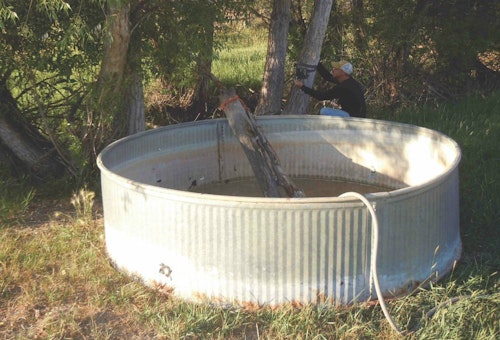
Pass the Salt
Food plots could be out of your reach due to any number of complications; abundant crops or water could create too many options to focus on for trail camera scouting — but there’s another option. If legal in your state, an established mineral site can pull in a bevy of deer for a photo finish.
Mineral sites have equal appeal and stopping power, particularly in areas that are mineral challenged. Research products with calcium and phosphorous in a 2- to 1-ratio respectively. Both are essential for antler and bone growth. Many supplements also include additional vitamins and minerals that boost a deer’s immune system, while maximizing genetic potential. In addition to an antler boost, mineral supplements can aid female deer during gestation and while lactating. It’s a win-win.
In Kansas, supplemental feeding and mineral distribution is legal. Last summer Richards was tracking a good buck visiting a food source with the regularity of a New York subway commuter. Then one day it simply disappeared. Hoping to lure it back in front of the camera Richards purchased a variety of mineral supplement products and distributed them in front of a trail camera location. It worked — but with one hitch.
“I bought about every type of mineral and supplement you could buy and overnight it worked to the point that buck religiously visited the site all summer,” said Richards. “Unfortunately I mixed too many together so I’m not sure which one made him go haywire! I have to be a bit more careful so I can narrow down what he preferred the best next time.”
Your mineral site doesn’t need to be anything fancy. Some land managers use mineral dispensers, but dumping them on the soil allows deer to paw and lick for benefit. If you feel the deer are not using minerals, add trace salt to increase visitation — possibly exponentially.
How many mineral sites you place depends on the size of your property. If you are only hunting 80 acres, a single source might be best to lure in as many as possible. According to some experts, a larger property could benefit from a mineral site every 50 to 75 acres depending on the habitat layout and whitetail usage of the overall parcel.
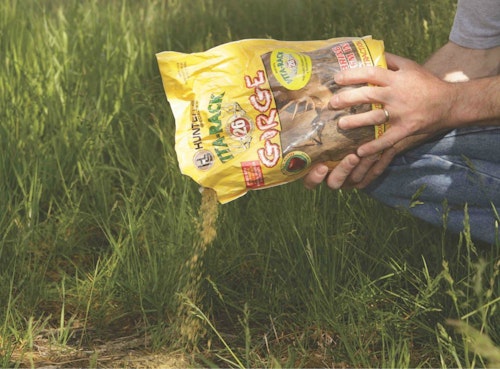
Route 66
When it comes to wild ungulates that prefer to travel on trails, no hoofed critter holds a candle to trail-loving whitetails. Both Schneider and Richards place a substantial amount of faith in the images they receive while monitoring trails. For Schneider, it helps him get a handle on where whitetails are moving to after visiting a large agricultural field. For Richards, he hopes to not only narrow down where deer are bedding, but to determine at what exact time they are using trails.
“I place my trail cameras where they are pointing inward to where the deer are coming from, whether he is coming from or going to bed,” Richards said. “I want to see him head on regardless of the direction he is traveling. That gives me a better image to judge his trophy potential and identify him, and of course I know immediately the direction he is heading.”
That information becomes increasingly important for early-season success, as he discovered this past fall. While tracking a buck Richards estimated to be 7.5 years old from years of trail camera images and shed antlers, he was able to put together an early-season plan. Being cautious, he placed his first stand in the opposite draw of where the buck was coming from in hopes of ambushing it on its way to a food plot. Trail camera information quickly determined the buck was passing that site only after shooting light. In fact, as he reviewed images the local whitetails, including the target buck, were actually circling around a hill and not walking over it, thus slowing their trip to the feeding area. Using all of his scouting information, he again adjusted stands with plans to ambush the buck as it used the hillside trail.
“I had 5 years of trail camera pictures of this buck and when I combined it all together, especially the summer travel patterns, I was able to narrow down to the exact trail he was using to finally tag him the year he blew up into a Kansas giant.”
Richards agrees that trail usage shifts throughout the four seasons, but you do have a couple common denominators to rely on as you surveil trails: food and refuge. You can bet whitetails will be using trails heavily that connect with the most nutrient foods in the area and also provide bedding cover. Summer is the time when whitetails pack on the pounds and they visit the best in green groceries as each crop peaks in palatability. Whether hunting vast areas like Montana or Kansas agricultural empires, tune in to shifting patterns and shift your trail observations accordingly.
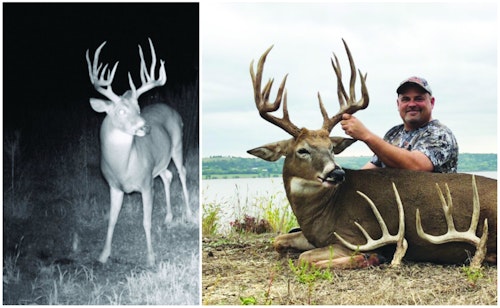
True to the Core
Trails that lead in the opposite direction of a fast food stop likely end up in a bedroom. These areas can also be critical to determine minute details of a whitetail, but you must be as cautious as a cat passing by a sleeping dog for top results. Schneider and Richards both caution that bedroom surveillance should be restrained at best. Pushing too far into a refuge could result in bumping deer while placing a camera, and especially when attempting to check it.
One easy, but expensive option for checking cameras is utilizing wireless trail cameras. Place the camera once and you only have to visit it on rare occasions to freshen batteries. Some even come with solar options for charging. Unfortunately, not all locations have wireless service and in Schneider’s case, Montana does not allow their use.
“Wireless cameras are not legal in Montana so I only go in once a month when I’m trying to monitor bedding cover,” Schneider said. “I’m not so much worried about hiding the camera, but I am really concerned about scent. The more time you spend in a buck’s home, the higher the probability of leaving scent around and alerting deer. I take every scent precaution.”
Richards is also very careful to be discreet in bedroom settings. He relies on wireless cameras whenever possible but when that’s not an option, he stations cameras on the edge of cover, not inside bedding areas. He also checks them at midday and only with favorable wind. Breezy conditions are even better and when his hunting app forecasts windy background noise it’s the perfect time to slip in and swap SD cards.
Summer passes by too quickly, with an activity level that crowds even the longer days. Despite the bustle, make sure you have a trail camera regimen in place to increase your fall whitetail success.
Sidebar: Defining a Core Territory for Trail Cam Support
One of the best descriptions of home and core territories comes from a study carried out along Maryland’s eastern shore and published in a master’s thesis by James Tomberlain in 2007. The definitions for core and home range were outlined in the study.
- Home range: Where a buck travels during its daily movement; includes feeding, bedding and breeding movement.
- Core home range: Where a buck spends 50 percent or more of its time.
In the Maryland study, it was determined that a buck’s core range was never more than 14 percent of its home range. That area includes the bedroom for all practical purposes and thus the reason for cautious concealment as you probe the perimeter.
With trail camera confirmation, you can corroborate where a buck is spending that 50 percent of its time ,and there’s no better time than summer when a buck is slightly off guard. Finding where a buck spends the bulk of its time is a good way to set up an ambush and increase your odds by hunting where a buck hangs out the most.

